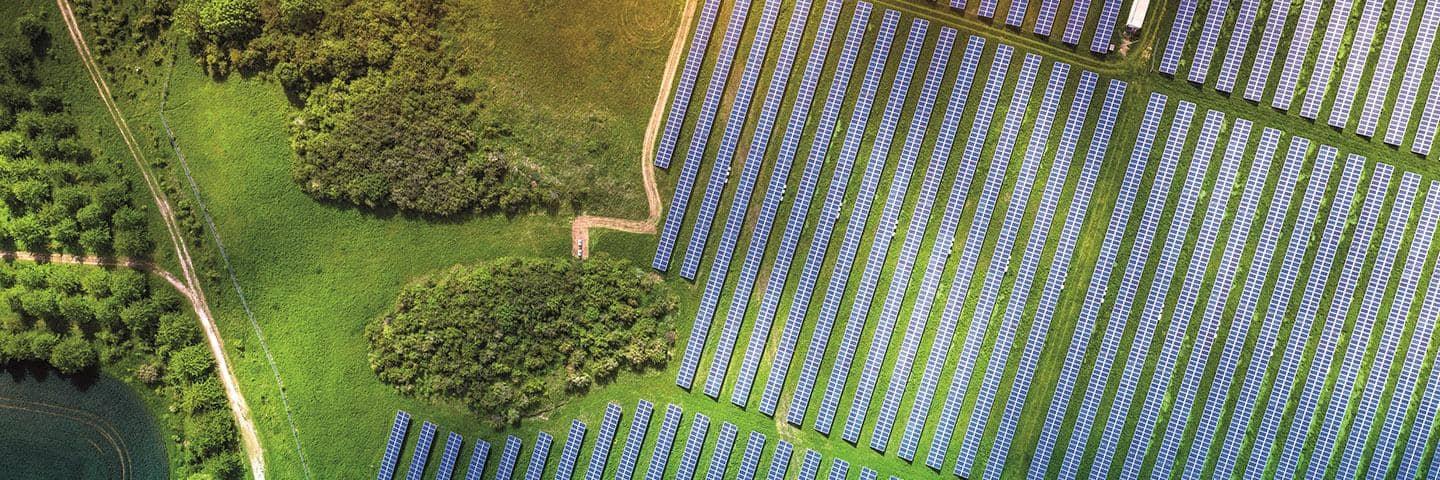
Reducing our financed emissions
Most of our emissions result from the activities of the clients that we finance and those generated in their respective value chains. These are our so-called ‘financed emissions’.
We are committed to align all our financing to the goals and timelines of the Paris Agreement, consistent with limiting the increase in global temperatures to 1.5°C. In order to meet this ambition, we need to reduce our financed emissions, not just for lending but for capital markets activities as well, and we work closely with our clients to do so.
In 2020, we developed our BlueTrack methodology to measure and track our progress against our financed emissions, setting 2025 targets for the Energy and Power sectors. We prioritised these sectors because they are responsible for up to three-quarters of all greenhouse gas emissions globally and because Barclays has meaningful exposure to them.
Since then, we have further extended the scope of our calculations to cover the full in-scope balance sheet financed emissions and have set reduction targets for eight sectors, including three new ones for 2023 – Agriculture, Aviation and UK Commercial Real Estate. Additionally, we have expanded the scope of our UK Residential Real Estate convergence point.
As of December 2023, our financed emissions for the energy sector have dropped by 44% since 2020, exceeding our target of a 40% reduction by 2030 and the emissions intensity of our Power portfolio has dropped by 26% since 2020.
| Sector | Target metric | Baseline year | Target vs baseline | Cumulative change |
|---|---|---|---|---|
| Energy | Absolute emissions | 2020 | -15% by 2025 | -44% |
| -40% by 2030 | ||||
| Power | Physical intensity | 2020 | -30% by 2025 | -26% |
| -50% to 69% by 2030 | ||||
| Cement | Physical intensity | 2021 | -20% to -26% by 2030 | -8% |
| Steel | Physical intensity | 2021 | -20% to -40% by 2030 | -16% |
| Automative Manufacturing | Physical intensity | 2022 | -40% to -64% by 2030 | 0% |
Aviation |
Physical intensity |
2023 |
-11% to -16% by end of 2030 |
Baseline set in 2022 |
UK Commercial Real Estate |
Physical intensity |
2023 |
-51% by end of 2030 |
|
Agriculture |
Absolute emissions |
2023 |
-21% by end of 2030 |
|
UK Housing |
Physical intensity |
2023 |
Portfolio convergence point vs. baseline -40% by end of 2030 |
We have also assessed our financed emissions for our UK Residential Real Estate portfolio and have identified the 2030 emissions intensity ‘convergence point’.
Consistent with our Purpose, and taking into account considerations of all relevant business factors, we continue to set emissions reduction targets for our portfolios where possible, aligned with the ambitions of the Net-Zero Banking Alliance (NZBA), of which we are a founding member.
Financed Emissions Methodology - BlueTrack™
Our approach to setting targets to reduce our financed emissions is underpinned by BlueTrack™, a methodology we have developed for measuring our financed emissions and tracking them at a portfolio level against the goals of the Paris Agreement. BlueTrack™ builds on and extends existing industry approaches to cover not only lending but also capital markets financing. This better reflects the breadth of our support for clients through our investment bank. Read more about BlueTrack™.
Working with our clients
Engaging with clients on their transition and decarbonisation efforts is at the core of our approach. With tightening policy criteria over the next two years, we will focus on those clients committed to the energy transition.
Clients’ transition plans and decarbonisation strategies will continue to be evaluated using our Client Transition Framework, assessing for alignment with Barclays’ financed emissions targets.
The energy companies unable or unwilling to reduce their emissions or play a role in the energy transition may find it increasingly difficult to access financing from Barclays.
You can read more about our Client Transition Framework in our 2023 Annual Report.
Restrictive policies
In addition to setting sector-specific emission reduction targets, we have set explicit restrictions to curtail or prohibit financing of certain activities and in sensitive sectors, including those relating to oil and gas expansion, thermal coal mining and coal-fired power generation, oil sands, hydraulic fracturing (‘fracking’) and projects in the Arctic Circle, Amazon Biome or involving ultra-deep water or extra heavy oil.
You can read more about our restrictive policies in our Climate Change Statement.

About our Financed Emissions Methodology
Our methodology for measuring our financed emissions, and tracking them at a portfolio level against the goals of the Paris Agreement.

Our climate dashboard
Showing our ‘carbon limit’ by sector, and tracking our financed emissions against our benchmarks. It also shows our operational emissions performance.